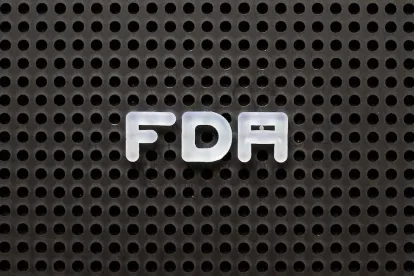On September 15, 2021, the Centers for Medicare & Medicaid Services (“CMS” or the “Agency”) published a proposed rule, which (if finalized) would repeal the Agency’s Medicare Coverage of Innovative Technology and Definition of “Reasonable and Necessary” (“MCIT/R&N”) final rule. Originally published by CMS during the final week of the Trump administration, the MCIT/R&N final rule addressed concerns that delays and uncertainty in Medicare coverage slowed innovation and impaired access to important new medical device technologies.[i] The final rule created a pathway to provide beneficiaries with national Medicare coverage of medical devices designated as “Breakthrough Devices” by the U.S. Food and Drug Administration (“FDA”).[ii]
Under the January 2021 final rule, Medicare coverage for Breakthrough Devices would be for a period of four years, starting on the date of FDA market authorization or a manufacturer-chosen date within two years of authorization. Upon conclusion of any MCIT coverage, existing coverage pathways would be available (i.e., claim-by-claim adjudication, local coverage determinations (“LCDs”), national coverage determinations (“NCDs”)). The Biden administration twice delayed the effective date of the MCIT/R&N final rule, which most recently was set to go into effect on December 15 of this year.
Changing course, CMS now proposes to repeal the MCIT/R&N final rule. The Agency claims that the MCIT/R&N final rule is not in the “best interest” of Medicare beneficiaries.[iii] In explaining its new position, CMS states that the rule “may provide coverage without adequate evidence that the Breakthrough Device would be a reasonable and necessary treatment for the Medicare patients that have the particular disease or condition that the device is intended to treat or diagnose.”[iv] Importantly, the Agency announces that CMS “no longer agree[s] that the FDA safety and effectiveness standards alone are sufficient to support open-ended Medicare coverage. FDA and CMS act under different statutes that have different goals and the standard for coverage…is not synonymous with standards for safety and efficacy standards for marketing authorization for the broader population.”[v]
Specifically, CMS states that there is no FDA requirement that Medicare beneficiaries be included in clinical studies needed for market authorization. As such, the Agency flags that Medicare would potentially cover a medical device, despite no data demonstrating that the product is reasonable and necessary for Medicare patients. CMS Chief Medical Officer and Director of the Center for Clinical Standards and Quality (“CCSQ”), Dr. Lee Fleisher, writes in a companion blog post on the Agency’s website that such clinical data is “important because Medicare patients have different clinical profiles and considerations due to the complexity of their medical conditions and concomitant treatments, compared to other groups.”[vi]
Additionally, CMS is concerned about the lack of discretion to deny certain claims regarding Breakthrough Devices. Under prior policies, the Medicare program could deny coverage if the Agency learned that a particular medical device may be harmful to Medicare beneficiaries. Here, CMS claims that the Agency would only be able to expeditiously remove a Breakthrough Device from the MCIT coverage pathway for limited reasons (e.g., FDA issues a safety communication or Warning Letter; FDA revokes product marketing authorization). The Agency asserts such a limitation may lead to preventable harm to Medicare beneficiaries.
There are public concerns, however, that repealing the MCIT/R&N final rule will negatively impact the innovative nature of the medical device industry as well as beneficiaries’ ability to receive expeditious coverage for Breakthrough Devices. CMS originally promulgated the MCIT/R&N final rule, in part, “due to concerns that delays and uncertainty in Medicare coverage slowed innovation and impaired beneficiary access to important new technologies, specifically those designated as [B]reakthrough [D]evices by the FDA.”[vii] In the companion blog post, Dr. Fleisher writes that CMS “recognize[s] the claim-by-claim process can create a risk of noncoverage for providers and patients, as well as time lags and potential regional variation in local determination.”[viii] Despite these issues, CMS believes that it would be more beneficial to “pursue additional policymaking avenues” rather than allow the MCIT/R&N final rule to take effect.[ix] The Agency asserts that repeal of the MCIT/R&N final rule would not prohibit coverage of Breakthrough Devices and that “[m]any of the eligible Breakthrough Devices are coverable and payable through existing mechanisms.”[x]
An expedited, 30-day public comment period concerning the Agency’s proposed rule closes on October 15, 2021. In particular, the Agency seeks feedback on how CMS “can create new coverage pathways or use existing ones to provide an appropriate balance of access to new technologies with necessary patient protections.”[xi]
[i] Medicare Coverage of Innovative Technology (MCIT) and Definition of “Reasonable and Necessary”, 86 Fed. Reg. 2987 (Jan. 14, 2021).
[ii] Section 515B(b) of the Federal Food, Drug, and Cosmetic Act (“FDCA”) sets out the designation criteria for a “Breakthrough Device.” Eligible medical devices must meet a first criterion: the device provides for more effective treatment or diagnosis of life-threatening or irreversibly debilitating human disease or conditions. Eligible medical devices must also meet at least one of four prongs of a second criterion: (1) the device represents a “breakthrough technology”; (2) no approved or cleared alternatives exist; (3) the device offers significant advantages over existing approved or cleared alternatives, including the potential, compared to existing approved alternatives, to reduce or eliminate the need for hospitalization, improve patient quality of life, facilitate patients’ ability to manage their own care (such as through self-directed personal assistance), or establish long-term clinical efficiencies; or (4) the availability of the device is in the “best interest of patients.” FDA’s December 2018 final guidance document concerning the Breakthrough Devices Program can be found here.
[iii] Medicare Coverage of Innovative Technology (MCIT) and Definition of “Reasonable and Necessary”, 86 Fed. Reg. 51326, 51327 (proposed Sept. 15, 2021).
[iv] Id.
[v] Id. at 51328.
[vi] Dr. Lee A. Fleisher, Medicare Coverage of Innovative Technologies (MCIT), CMS.gov (Sept. 13, 2021), https://www.cms.gov/blog/medicare-coverage-innovative-technologies-mcit.
[vii] 86 Fed. Reg. at 51327.
[viii] Fleisher, Medicare Coverage of Innovative Technologies (MCIT).
[ix] Id.
[x] 86 Fed. Reg. at 51330.
[xi] Fleisher, Medicare Coverage of Innovative Technologies (MCIT). CMS also requests certain feedback concerning the “Reasonable and Necessary” aspect of the proposed rule. For example, the Agency poses the following two questions: “In lieu of fully repealing the R&N rule, should the final rule instead merely repeal the commercial insurance aspects of the rule? If CMS does consider future rulemaking to include defining reasonable and necessary, what criteria should CMS consider as part of the reasonable and necessary definition?” 86 Fed. Reg. at 51331.





 />i
/>i

